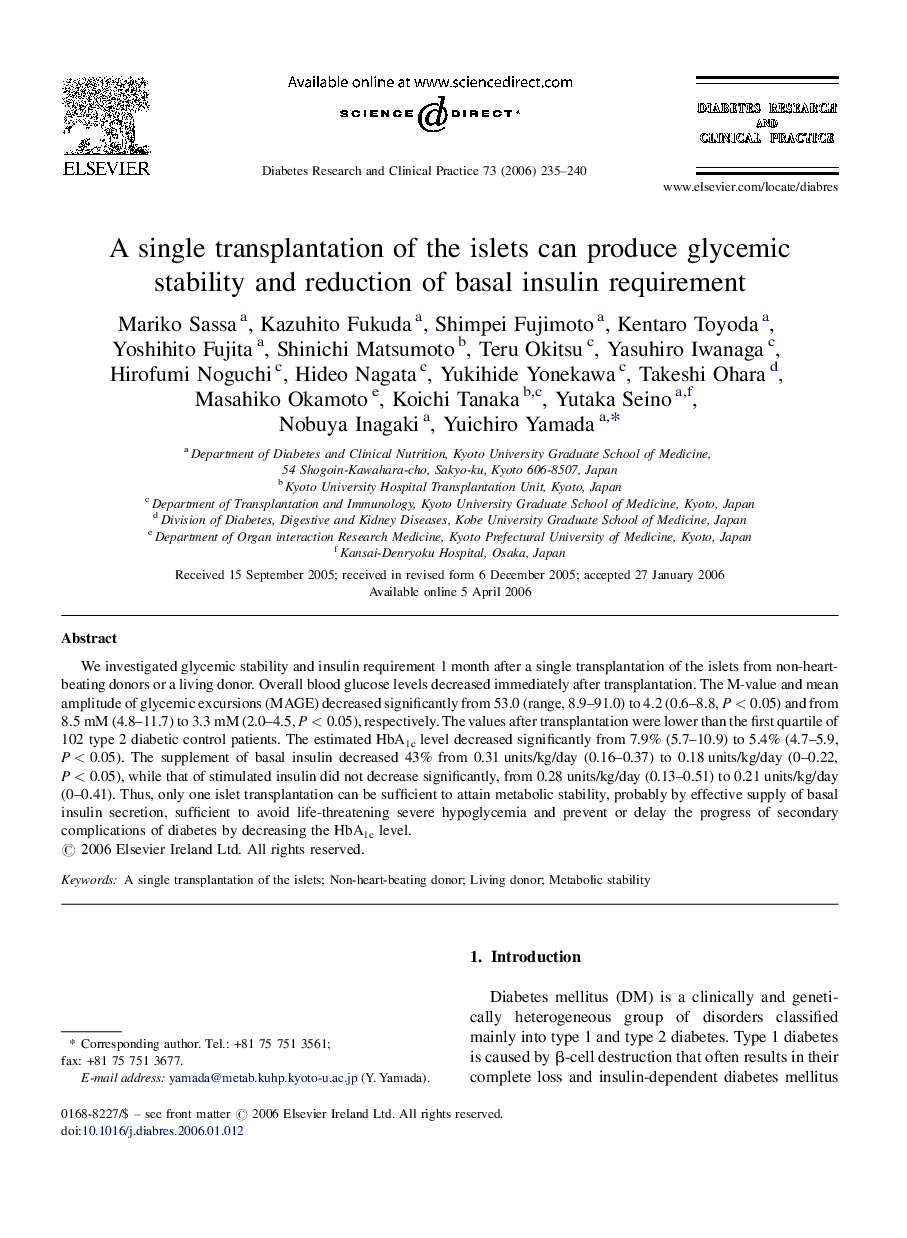| Article ID | Journal | Published Year | Pages | File Type |
|---|---|---|---|---|
| 2798847 | Diabetes Research and Clinical Practice | 2006 | 6 Pages |
Abstract
We investigated glycemic stability and insulin requirement 1 month after a single transplantation of the islets from non-heart-beating donors or a living donor. Overall blood glucose levels decreased immediately after transplantation. The M-value and mean amplitude of glycemic excursions (MAGE) decreased significantly from 53.0 (range, 8.9-91.0) to 4.2 (0.6-8.8, PÂ <Â 0.05) and from 8.5Â mM (4.8-11.7) to 3.3Â mM (2.0-4.5, PÂ <Â 0.05), respectively. The values after transplantation were lower than the first quartile of 102 type 2 diabetic control patients. The estimated HbA1c level decreased significantly from 7.9% (5.7-10.9) to 5.4% (4.7-5.9, PÂ <Â 0.05). The supplement of basal insulin decreased 43% from 0.31Â units/kg/day (0.16-0.37) to 0.18Â units/kg/day (0-0.22, PÂ <Â 0.05), while that of stimulated insulin did not decrease significantly, from 0.28Â units/kg/day (0.13-0.51) to 0.21Â units/kg/day (0-0.41). Thus, only one islet transplantation can be sufficient to attain metabolic stability, probably by effective supply of basal insulin secretion, sufficient to avoid life-threatening severe hypoglycemia and prevent or delay the progress of secondary complications of diabetes by decreasing the HbA1c level.
Related Topics
Life Sciences
Biochemistry, Genetics and Molecular Biology
Endocrinology
Authors
Mariko Sassa, Kazuhito Fukuda, Shimpei Fujimoto, Kentaro Toyoda, Yoshihito Fujita, Shinichi Matsumoto, Teru Okitsu, Yasuhiro Iwanaga, Hirofumi Noguchi, Hideo Nagata, Yukihide Yonekawa, Takeshi Ohara, Masahiko Okamoto, Koichi Tanaka, Yutaka Seino,
